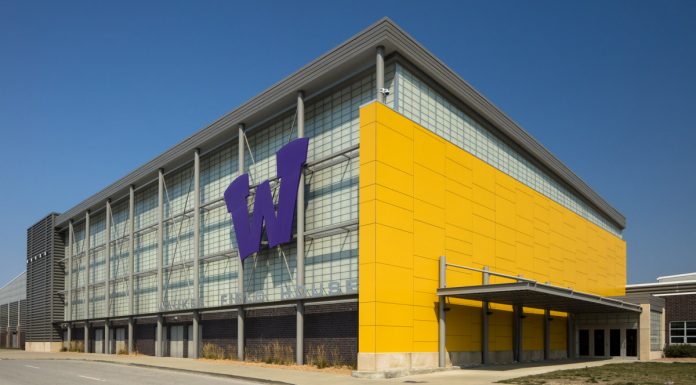In today’s hyper-connected digital world, an efficient, well-structured workflow is no longer a luxury—it’s a necessity. Businesses and individuals alike are under pressure from rising levels of competition and shorter deadlines to find ways to work more efficiently. But how do we navigate the complex landscape of tasks, processes, and technologies to achieve this? That’s where the art of workflow optimization comes in.
Workflow optimization entails developing, deploying, and tweaking existing workflows to improve their efficacy and productivity. It involves harnessing cutting-edge technology, innovative strategies, and a deep understanding of your work processes. From automating repetitive tasks to reducing decision fatigue and improving communication, the potential benefits of workflow optimization are substantial.
The Importance Of Time Management And Productivity
Effective time management is at the core of workflow optimization. Time management skills allow you to do more tasks in less time, freeing you up for other commitments or personal activities. It’s about making conscious choices about how you spend your time and focusing on high-priority tasks.
To improve time management, start by setting clear goals and breaking them down into actionable steps. Having a roadmap to follow lets you prioritize tasks and allocate time accordingly. Additionally, eliminate distractions and practice self-discipline. Minimise interruptions, turn off notifications and create a conducive work environment.
Another important aspect of workflow optimization is increasing productivity. Productivity is not just about working more; it’s about working smarter. To increase productivity, find ways to eliminate or minimize time-wasting activities. This could involve automating repetitive tasks, using productivity tools, or implementing strategies to minimize decision fatigue.
Assessing Your Current Workflow
Before you can optimize your workflow, you need to understand how it currently operates. Start by mapping out your existing processes. This involves documenting all the steps involved in completing a task or project. This visual representation will help you identify any bottlenecks or inefficiencies that may be hindering productivity.
Once you have mapped out your workflow, evaluate each step critically. Ask yourself if each step is necessary if it can be simplified or streamlined, or if it can be eliminated altogether. Look for areas where tasks are duplicated or where there is unnecessary back-and-forth communication. By identifying these pain points, you can begin to make targeted improvements.
Additionally, gather feedback from your team or colleagues. They may have insights or suggestions for improving the workflow that you may not have considered. Collaborative input can lead to more comprehensive and effective workflow optimization.
Identifying Bottlenecks And Inefficiencies
Bottlenecks and inefficiencies can significantly slow down your workflow and reduce productivity. Identifying these roadblocks is crucial for successful optimization. One way to identify bottlenecks is by tracking the time it takes for tasks to move through each step of the workflow. Look for areas where tasks get delayed or where there is a backlog of work.
Inefficiencies can stem from a variety of factors, such as outdated processes, lack of clarity in roles and responsibilities, or poor communication. Take the time to analyze each step of your workflow and identify any areas that could be causing delays or confusion. It’s also important to consider the human element. Are there any skill gaps or training needs that may be contributing to inefficiencies?
By pinpointing bottlenecks and inefficiencies, you can develop targeted strategies to address them and streamline your workflow.
Streamlining Your Processes
Once you have identified bottlenecks and inefficiencies, it’s time to streamline your processes. Start by simplifying and standardizing your workflows. Look for opportunities to consolidate or eliminate unnecessary steps. Streamlining your processes reduces the chances of errors, improves consistency, and speeds up completion times.
Consider implementing workflow management software to automate and streamline tasks. These tools can help you automate repetitive tasks, track progress, and improve collaboration. Look for software that integrates well with your existing systems and provides the features you need to optimize your workflow.
In addition to software tools, consider implementing clear communication protocols and documentation standards. This helps ensure that everyone involved in the workflow understands expectations, responsibilities, and deadlines. Clear communication reduces the chances of misunderstandings and delays.
Implementing Automation And Utilising Tools To Increase Efficiency
Automation and the use of technology tools play a significant role in workflow optimization. By leveraging technology, you can automate repetitive tasks, reduce the likelihood of errors, and increase overall efficiency.
Look for opportunities to automate time-consuming tasks that do not require human judgment. This could include automating data entry, generating reports, or sending regular updates. Automating these tasks allows you to free up your time for more complex and value-added activities.
There are numerous tools available to help automate and streamline your workflow. Task management software, for example, allows you to create and assign tasks, set deadlines, and track progress. Document management systems enable you to store and access files securely, reducing the time spent searching for documents.
One tool that can significantly improve workflow efficiency is the Smallpdf compress PDF tool. The Smallpdf compress PDF tool allows you to quickly and easily reduce the file size of PDF documents. This is especially useful when working with large files that can slow down your workflow. By compressing PDFs, you can send and receive files more quickly, save storage space, and improve overall document management.
When implementing automation and utilizing tools, it’s important to consider your workflow’s specific needs and requirements. Choose tools that align with your objectives and integrate well with your existing systems. Regularly evaluate the effectiveness of the tools you use and make adjustments as necessary.
Summing Up
Mastering workflow optimization is essential for saving time and increasing productivity in today’s fast-paced world. You may establish a productive and efficient workflow that makes the most of your time and resources by analyzing your current process, pinpointing bottlenecks and inefficiencies, streamlining procedures, and making use of automation and technological solutions.
Remember that workflow optimization is an ongoing process. Regularly review and refine your processes to adapt to changing needs and circumstances. Embrace new technologies and strategies that can further enhance your workflow and stay ahead of the curve.
By continuously striving for workflow optimization, you can achieve higher productivity, reduce stress, and ultimately achieve your goals with greater ease. Start implementing these strategies today and unlock the full potential of your workflow.











